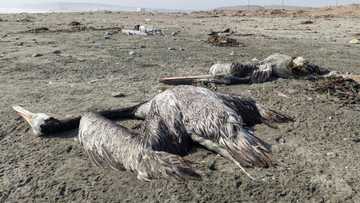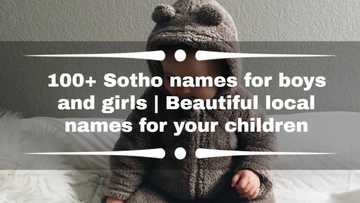12 Famous African tribes: culture, rituals, map and traditions
Did you know there are approximately 3,000 African tribes and about 2,000 languages and dialects on the continent? Some ethnic groups are larger than others. Some are more famous than others because of their culture, rituals, and traditions.
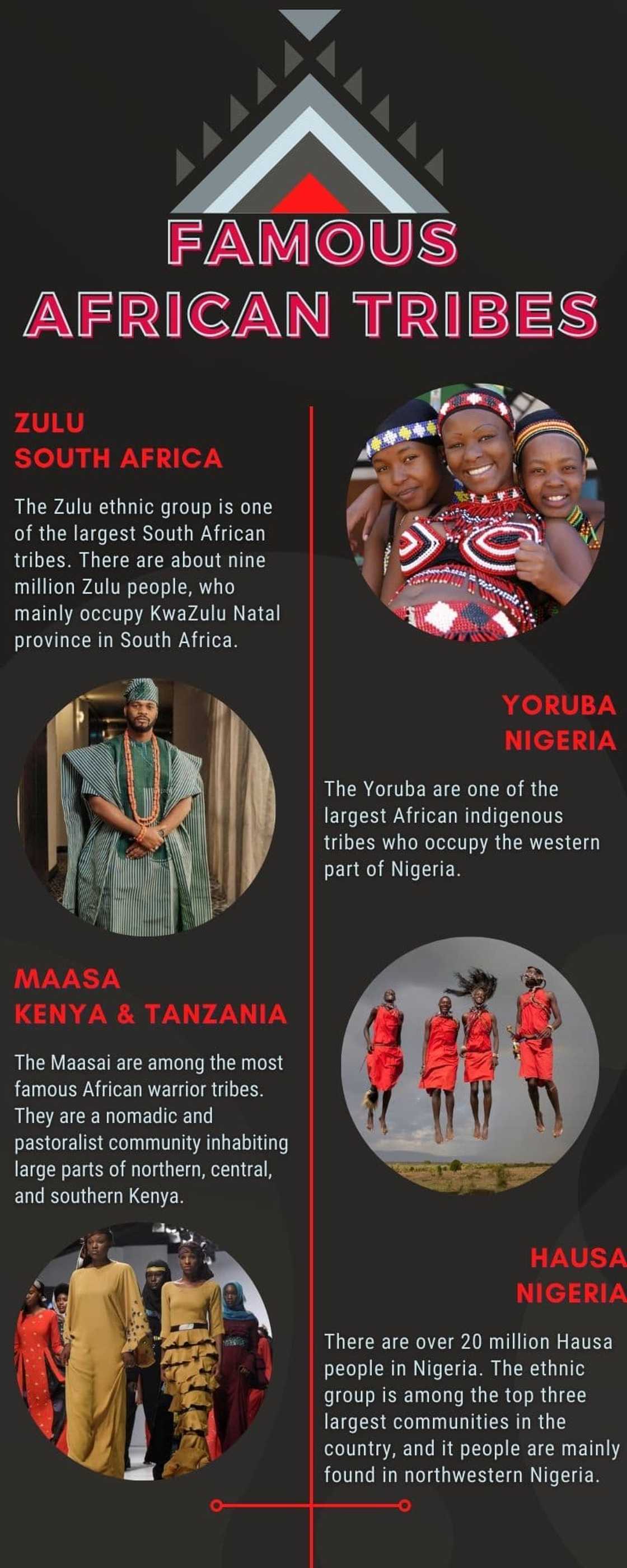
Source: UGC
Most African tribes have unique aspects of their culture and traditions. Some ethnic groups are fading away due to westernisation. Some communities are making efforts to ensure their traditions do not die.
Famous African tribes
Below is a look at some globally-known African ethnic groups and more about their traditions and rituals.
1. Zulu - South Africa
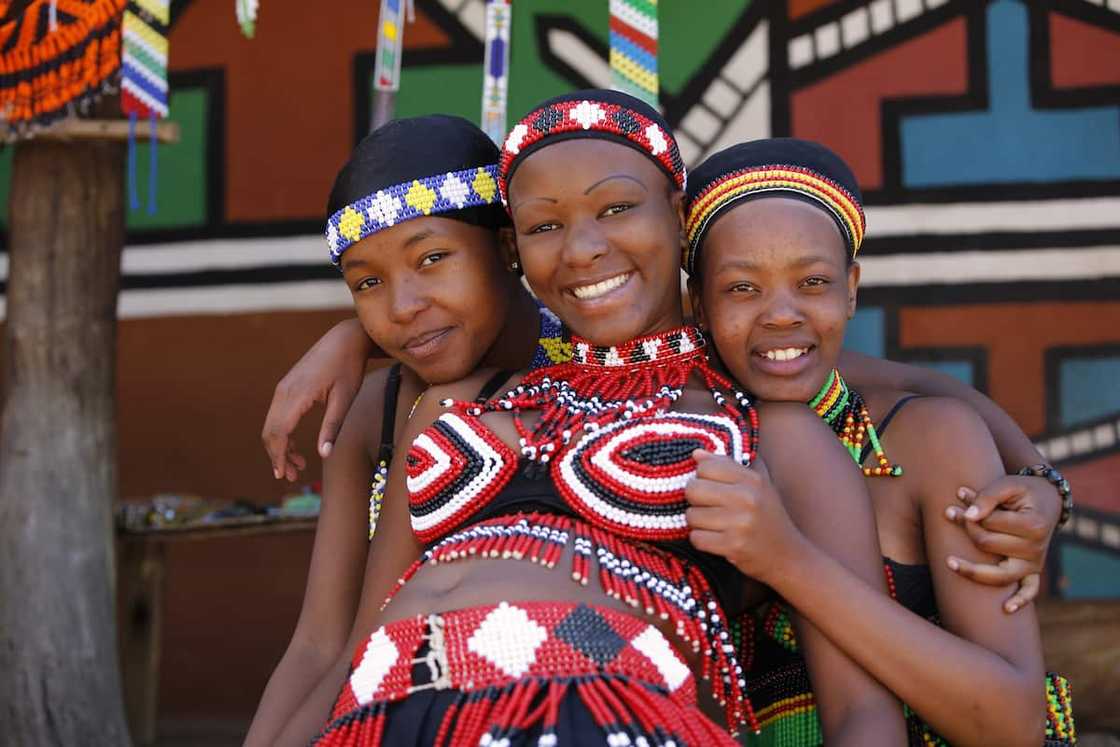
Source: Getty Images
The Zulu ethnic group is one of the largest South African tribes. There are about nine million Zulu people, who mainly occupy KwaZulu Natal province in South Africa. The community's most famous leader was Shaka, who reigned between 1816 and 1828.
The traditional language in this community is called isiZulu. This language is distinct because it involves a lot of clicking. People believe in spirits called abaphansi or amadlozi, who are appeased for good health and fortune.
There are special rituals performed at birth, puberty, marriage, and death. The mandatory marriage steps are lobola or dowry payment, izibizo or gift-giving, and umabo or traditional wedding.
The traditional attire in this community is bright and colourful. Men, women, and children accessorise with plenty of beads. Common Zulu traditional foods include amazi, uphuthu, amadumbe, ujeqe, and umqombothi.
2. Yoruba - Nigeria
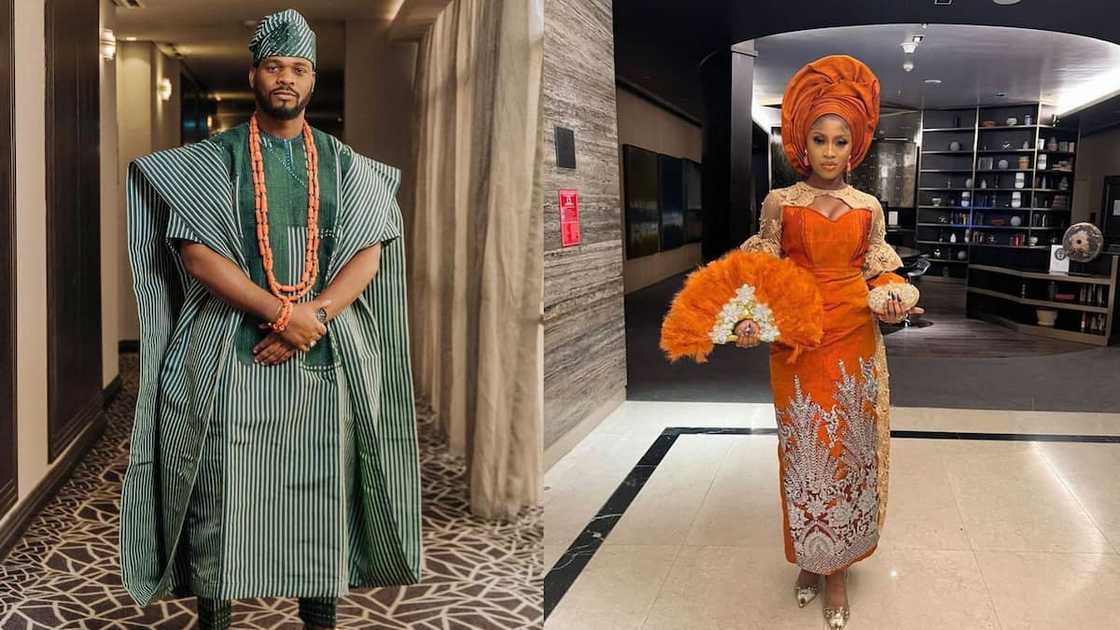
Source: UGC
The Yoruba are one of the largest African indigenous tribes who occupy the western part of Nigeria. It is believed that the community descended from a supreme being called Odua or Oduduwa.
Yoruba has multiple dialects, but its speakers can all understand each other. In this community, local festivals are dedicated to specific deities.
After birth, no one is allowed to speak until the baby cries. The placenta is buried in the backyard. Male and female circumcisions are performed in the first month of birth, and marriages are arranged.
The traditional Yoruba attire is colourful and elaborate. Today, traditional outfits are worn to social functions. Yoruba women are known for their colourful head ties made of a rectangular fabric.
3. Maasai - Kenya & Tanzania
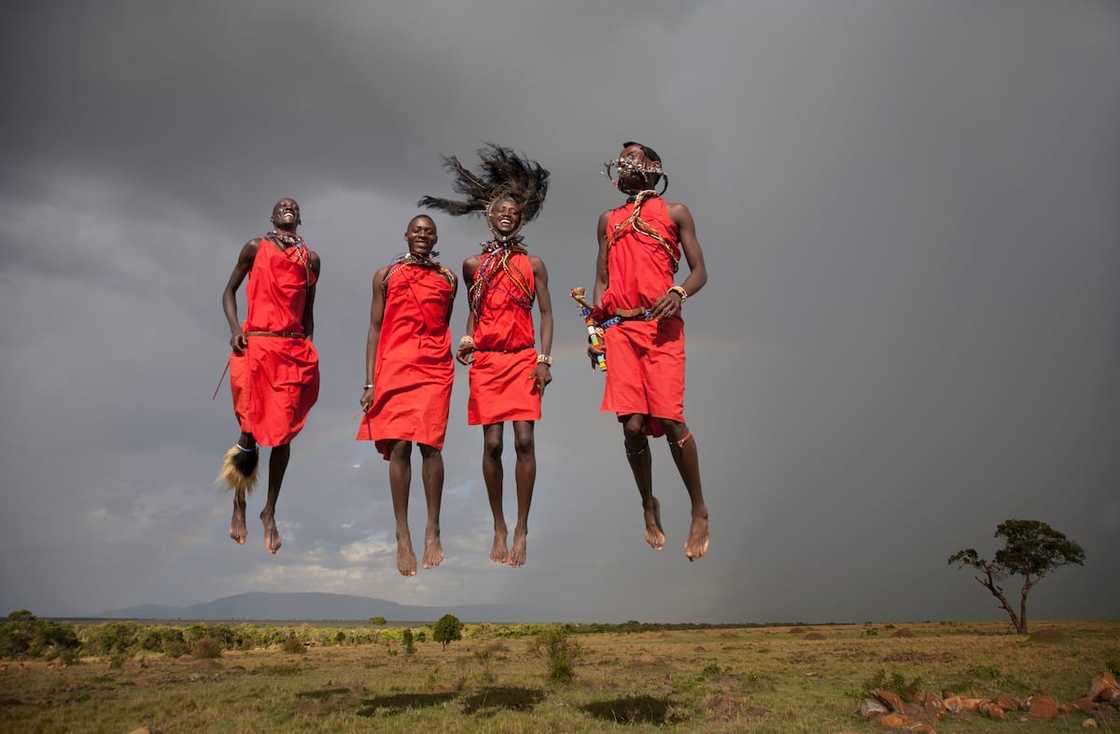
Source: Getty Images
The Maasai are among the most famous African warrior tribes. They are a nomadic and pastoralist community inhabiting large parts of northern, central, and southern Kenya.
People from this community live in temporary shelters called manyatta. Women construct the manyattas. The Maasai society is patriarchal in nature, and the measure of a man's wealth is his children and cattle.
One of the unique traditions in this community is there are no formal funeral ceremonies. When one dies, they are left in the fields for scavengers. Today, some members of this community conduct burial ceremonies.
This community is monotheistic, and their supreme being is called Enkai. The traditional Maasai diet comprises meat, blood, milk, fat, honey, and tree bark. The community is one of the oldest African tribes known to man.
Red is a favoured color in this community, and Maasai women engage in weaving and bead jewellery making. Ear piercing and the stretching of earlobes is considered beautiful, so many people from this community have stretched earlobes with metal hoops.
4. Hausa - Nigeria
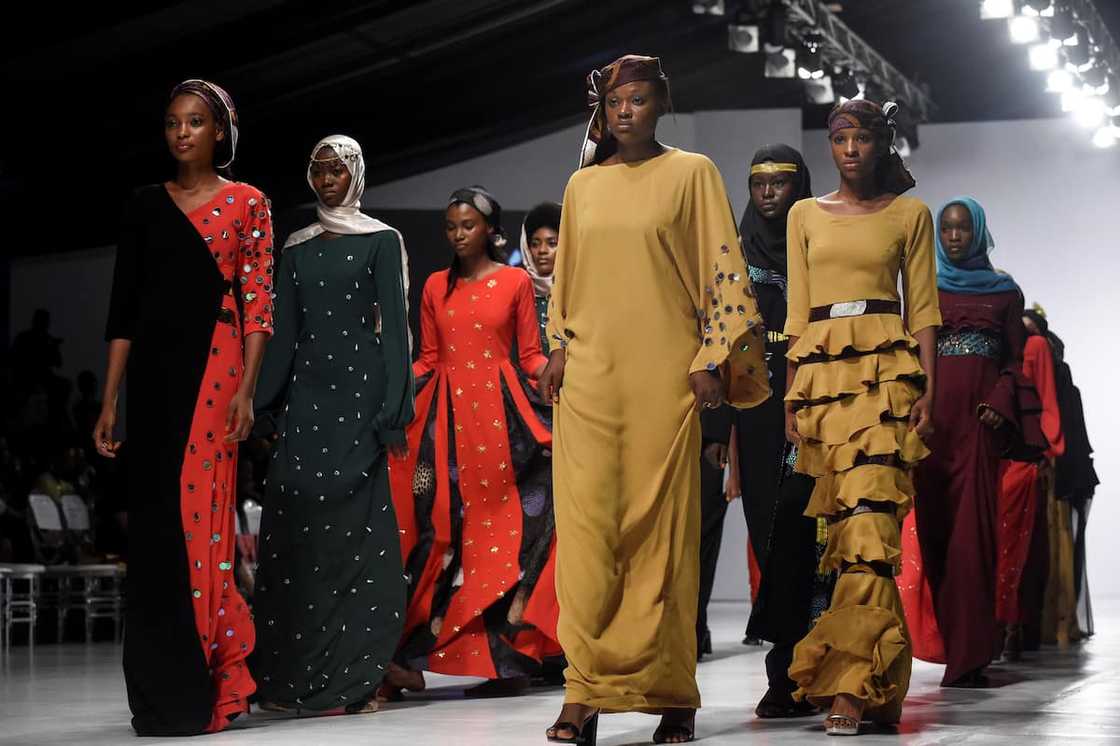
Source: Getty Images
There are over 20 million Hausa people in Nigeria. The ethnic group is among the top three largest communities in the country, and it people are mainly found in northwestern Nigeria.
Persons from this community speak the Hausa language, which is heavily infused with Arabic words due to Islamic influence. A large percentage of Hausa people are Muslims, and a few worship bori or iskoki (nature spirits).
The main rites of passage in this community are birth, circumcision, marriage, and death. In the rural set-up, people live in large households called gidaje, and men are polygamous.
Staple grains in the community include rice, millet, sorghum, and maize. People also consume different meats and vegetables.
The traditional Hausa attire is elaborate. Men wear large flowing gowns called gare or babban gida, while women wear wrap-around robes made of colourful fabric with matching blouses.
5. Swahili - Tanzania & Kenya
The Swahili are among the ancient African tribes you should know about. They occupy the coastal areas of Kenya and Tanzania.
The Swahili culture is Swahili is inextricably connected to Islam. There are no specific rites of passage for children or teens, but marriage marks the beginning of adulthood.
Modest behaviour is valued in this community, including greeting everyone you meet. The Swahili society is patriarchal, and decisions made by the man of the house are final.
Women wear brightly colored cotton cloths called kanga or leso, while mean wear striped kikois. The community's cuisine is spicy, and the popular foods include pilau, biryani, supu ya pweza, samaki wa kupaka, and maharage ya nazi.
6. Asante/ Ashanti - Ghana
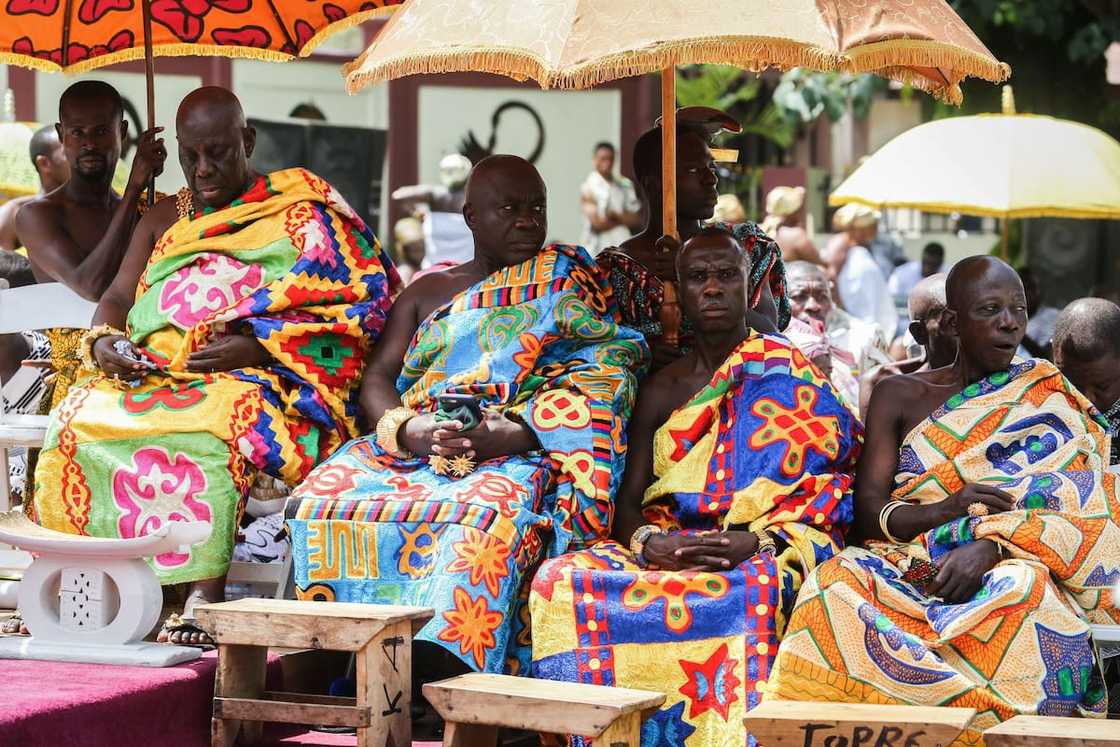
Source: Getty Images
The Ashanti/ Asante people are the largest tribe in Ghana and they mainly occupy the central part of the country. They are known for their unique metal and gold crafts, woodcarving, and brightly coloured woven clothes.
People from this community believe that everything has a soul, including animals and plants. They also believe in supernatural beings and other magical powers.
Birth, puberty, marriage, good harvests, and death are important in this culture. The Ashanti traditionally had an abundance of food crops. The commonly grown and consumed foods are plantains, cassava, maize, cocoa, vegetables, cereals, legumes, and yams.
The Ashanti value their traditional clothing, especially the Kente, which is weaved by young men. Kente is a precious and colourful piece of cloth. Kings and chiefs wear it because it is associated with authority.
7. Fulani - Nigeria, Senegal, & Guinea

Source: Getty Images
A look at the African tribes' map reveals the Fulani are mainly found in West African nations, i.e., Nigeria, Senegal, and Guinea. These people are also known as the Fulbe or Peuls.
It is believed that the first Fulani family emerged from a river. A significant section of the Fulani population is Muslim.
An elaborate naming ceremony is held after a child is born. Boys are circumcised at about seven years, and are girls usually betrothed in marriage in their early or mid-teens.
Semteende (modesty), hakkiilo (common sense), and munyal (patience) are the most precious values, and people often live in small, temporary camps.
8. Tuareg - Saharan Africa
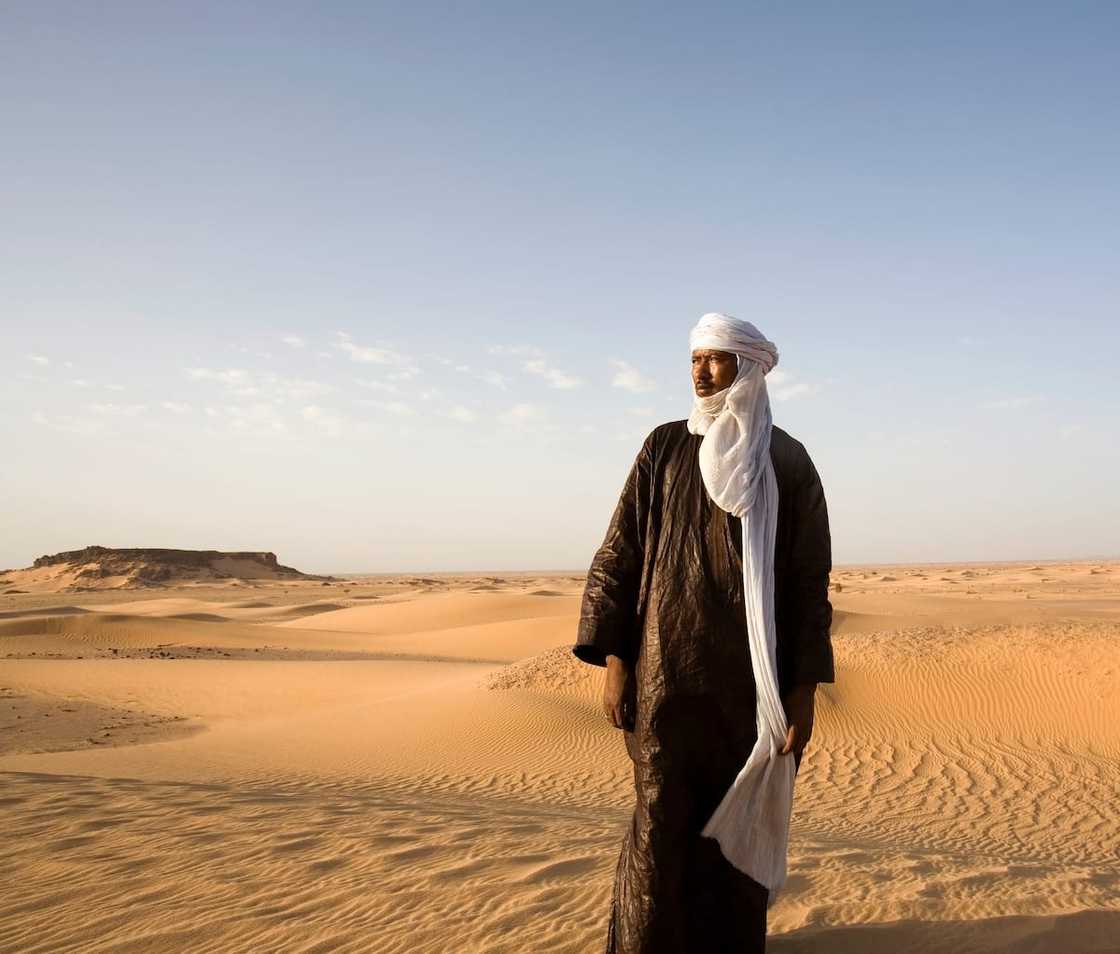
Source: Getty Images
The Tuareg ethnic group has about one million people found in Algeria, Niger, Mali, Libya, and Burkina Faso. Its people are semi-nomadic and Islam.
Men from this community are famous because they veil their faces with a piece of cloth. Tuareg men begin to wear a veil over the face when they are about 18, and this signifies that they are adults who are ready to marry.
Once married, women wear a head scarf that covers their hair. They also wear wrap-around skirts and embroidered blouses.
A week after a baby is born, a naming ceremony is held. The community has multiple myths about female ancestors who founded its traditions. Music and poetry are an important part of the Tuareg.
9. Hamar/ Hamer - Ethiopia

Source: Getty Images
The Hamar/ Hamer tribe lives in the Southern Omo Zone, near the Kenyan-Ethiopian border. The climate in this area is pretty harsh and it affects human life span. Did you know it is rare to find a person over 45 from this community?
There are about 50,000 Hamer people. One of the interesting traditions is that young men who wish to marry have to jump over bulls picked by girls' families.
If a young man fails to jump over four times, that is considered a bad sign. He is not allowed to marry the girl. Instead, he is given another chance after one year. Polygamy is allowed in this community, and a wealthy and strong man can have up to four wives.
Another unique custom is preoccupation with physical appearance. They have unique hairstyles and use wooden pillows when sleeping to prevent the hair from touching the ground.
Land in this community is communal and is free for cultivation and grazing. Labour is divided in terms of sex and age.
10. Xhosa - South Africa
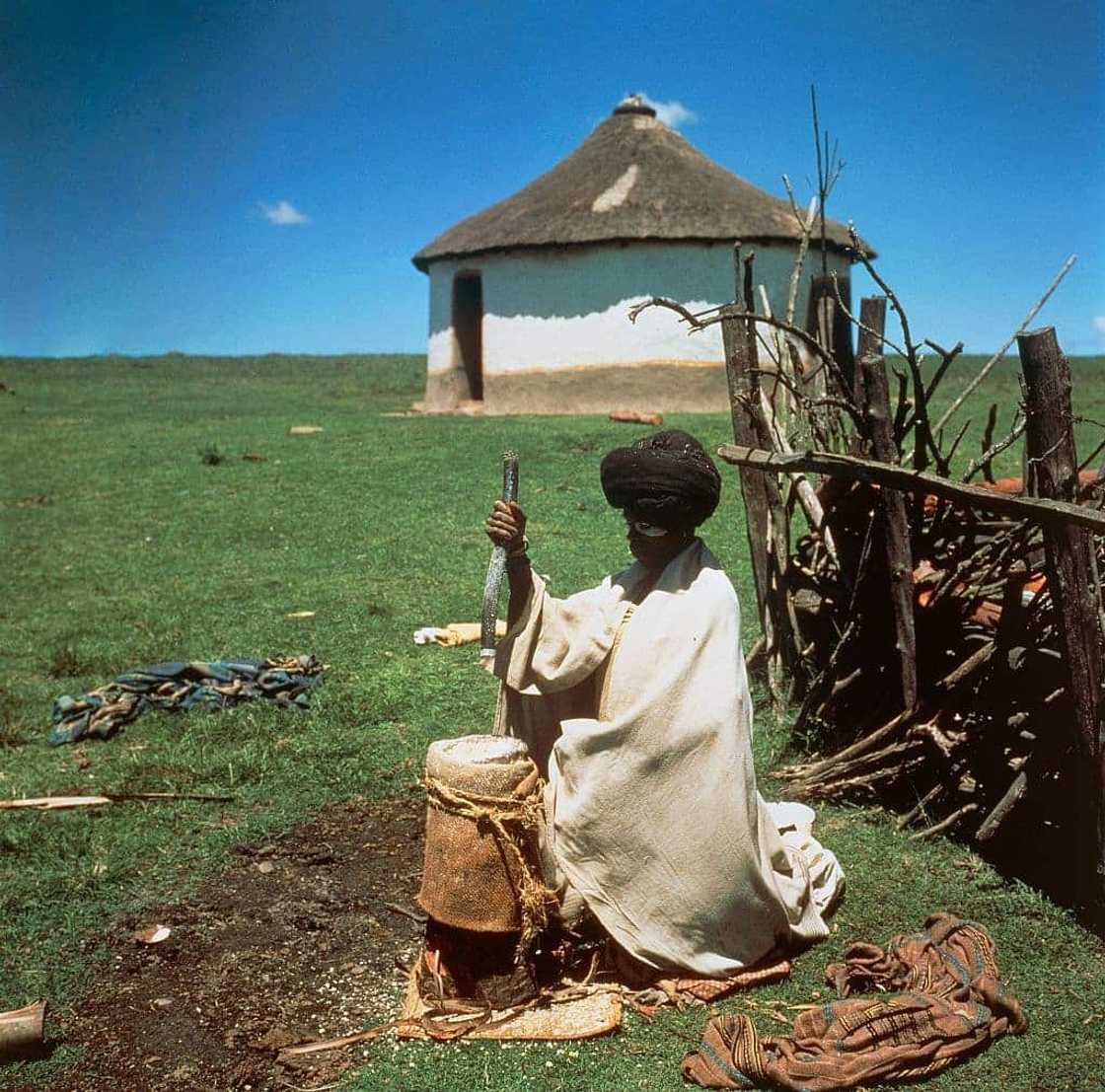
Source: Getty Images
The Xhosa people comprise the second-largest tribe in South Africa. They are predominantly found in the south and eastern sides of the country.
The tribe's language is known as isiXhosa. Like isiZulu, it is characterised by unique click sounds. The traditional Xhosa family is primarily patriarchal, and women and children must submit to the man's authority. Polygamy was practised in the past, but the situation is gradually changing.
The staple Xhosa food is corn. Different types of meat and fermented milk are also commonly consumed. Jewellery in African tribes is valued, and the Xhosa ethnic group is no exception. Beadwork had cultural significance in the past but is now used as a fashion statement.
11. Karo - Ethiopia
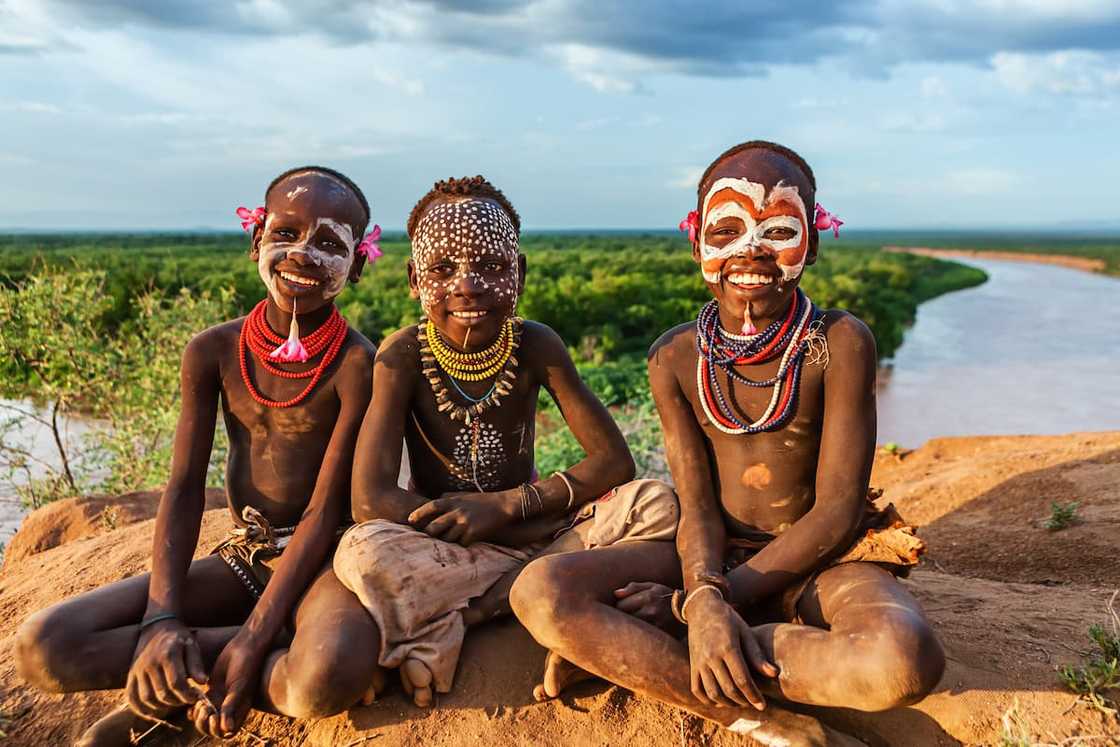
Source: Getty Images
The Karo tribe is one of the smallest ethnic groups in Africa, with about 1,000 to 1,200 people. People from this community differentiate themselves from the neighbouring tribes by their body and face painting.
In this community, people paint themselves daily with coloured ochre, charcoal, white chalk, yellow mineral rock, and pulverised iron ore. They draw and paint varying designs that cover the torso and legs. They also wear large beads around their necks.
Men cover their bodies and faces with ashes mixed with fat to symbolise virility. The community has elaborate festivals and rituals that have been maintained for centuries. While some people may think they are primitive African rituals ceremonies, the Karo are proud of them.
Karo people are found along the east banks of the Omo River in southern Ethiopia. Agriculture is their primary economic activity.
12. Himba/ Ovahimba - Namibia
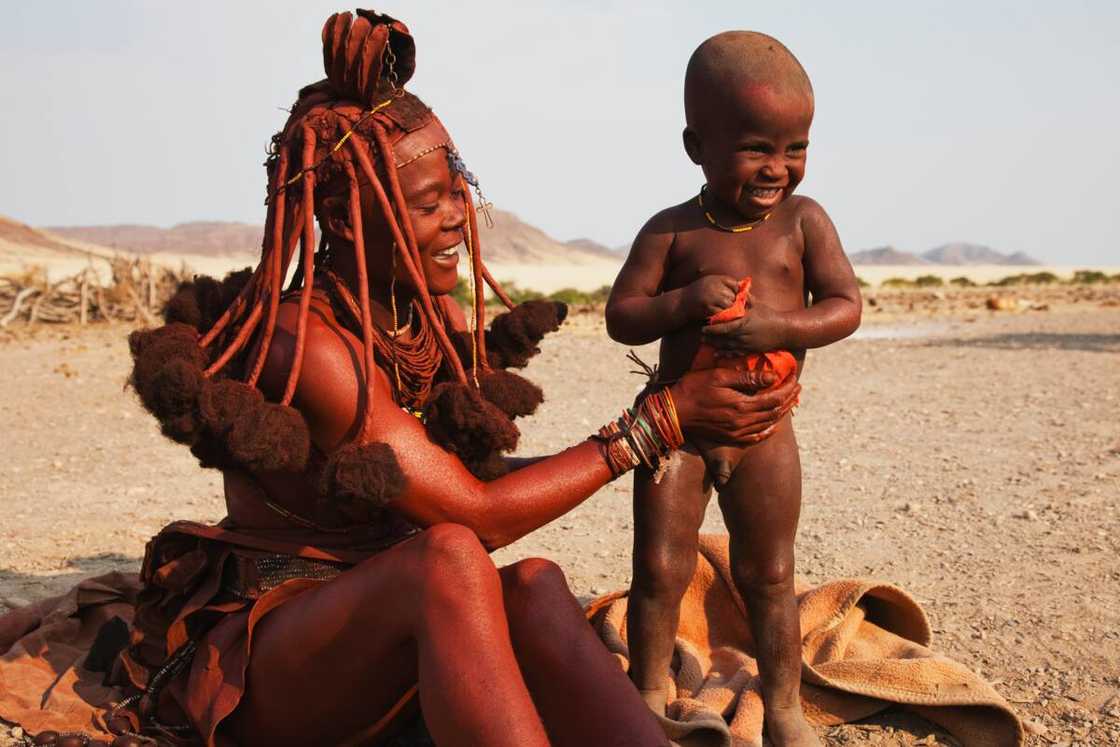
Source: Getty Images
The Himba or Ovahimba are a semi-nomadic community living in northern Namibia. This ethnic group is remarkably famous because its people cover themselves with otjize, a blend of butterfat and ochre pigment.
The paste is used to cleanse the skin and protect people from the extremely hot and dry climate. Ovahimba people keep livestock. They breed fat-tailed sheep and goats. They also farm rain-fed crops e.g., maize and millet.
An unusual tradition in this community is that women and girls perform more labour-intensive work than men and boys. The Himba believe in a supreme being called Mukuru, and they communicate with Mukuru through holy fire.
Another unusual tradition is that women from this community are not allowed to use water for cleaning. Instead, they take daily smoke baths to maintain personal hygiene. Men are polygamous, and early marriages are arranged. Did you know this community is famous because members offer free sex to guests and travellers?
How many tribes are in Africa?
Africa is home to about 3,000 tribes. It is the most culturally diverse continent.
What is the most famous tribe in Africa?
Zulu is arguably the most popular tribe in Africa. It is also one of the largest ethnic groups in South Africa.
There are numerous African tribes, each with rich traditions and rituals. The most popular ethnic groups on the continent have special customs that set them apart from the rest.
READ ALSO: Top 20 interesting facts about South Africa you ought to know | Details for travellers
Briefly.co.za recently published some interesting facts about South Africa you should know, especially if you wish to visit this beautiful country. South Africa is one of the richest countries in the world in terms of cultural and natural resource diversity.
In recent years, South Africa has become favourite destination for travellers from different parts of the world. You should learn a few key things before visiting this country.
Source: Briefly News

Jedidah Tabalia Jedi is a journalist with over 5 years working experience in the media industry. She has a BSc. in Human Resource Management from Moi University (graduated in 2014) and a working in progress MBA in Strategic Management. Having joined Genesis in 2017, Jedi is a passionate Facts and Life Hacks, Fitness, and Health content creator who sees beauty in everything. She loves traveling and checking out new restaurants. Her email address is jedidahtabalia@gmail.com

Cyprine Apindi (Lifestyle writer) Cyprine Apindi is a content creator and educator with over six years of experience. She holds a Diploma in Mass Communication and a Bachelor’s degree in Nutrition and Dietetics from Kenyatta University. Cyprine joined Briefly.co.za in mid-2021, covering multiple topics, including finance, entertainment, sports, and lifestyle. In 2023, she finished the AFP course on Digital Investigation Techniques. She received the Writer of the Year awards in 2023 and 2024. In 2024, she completed the Google News Initiative course. Email: cyprineapindi@gmail.com




